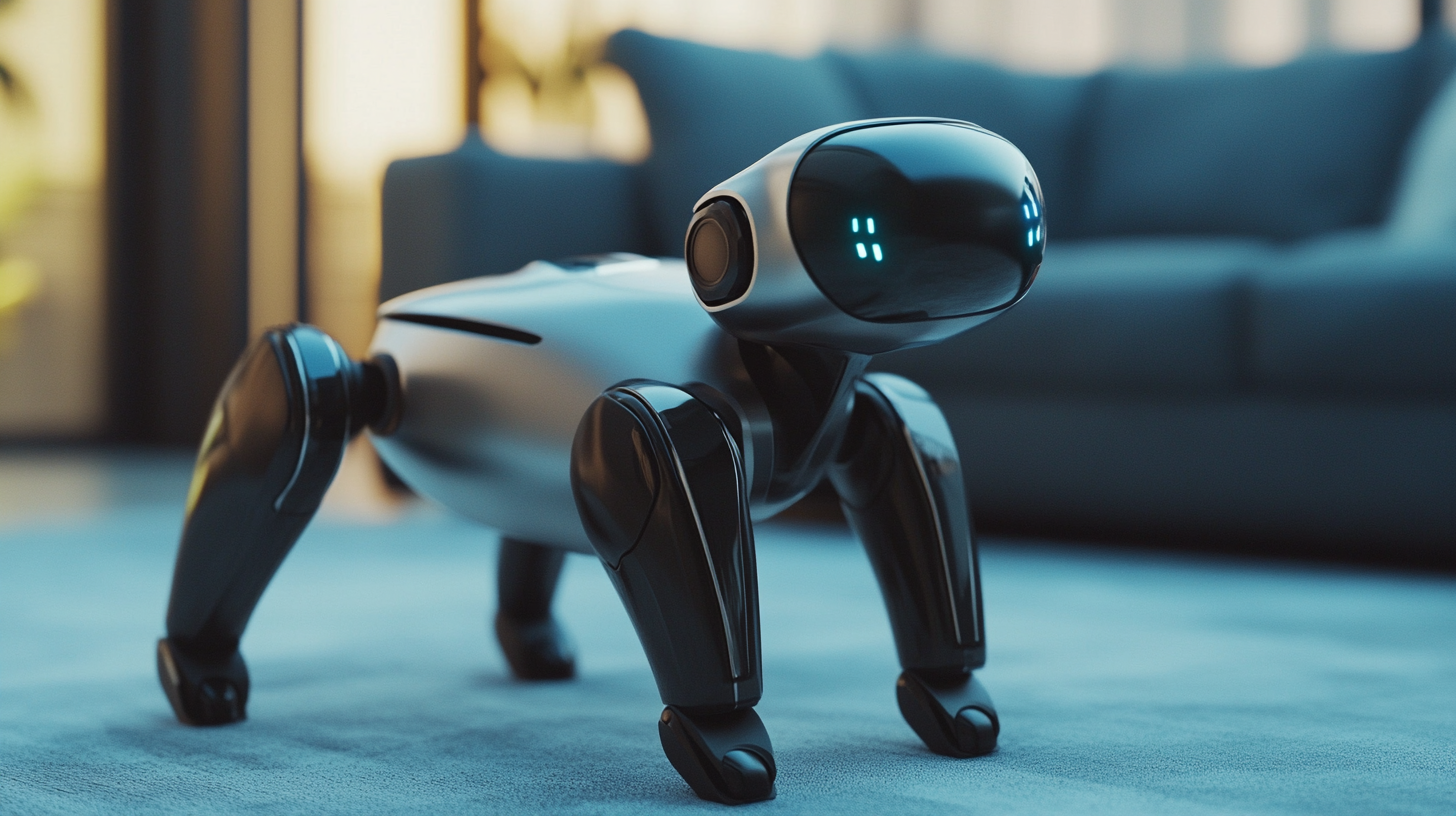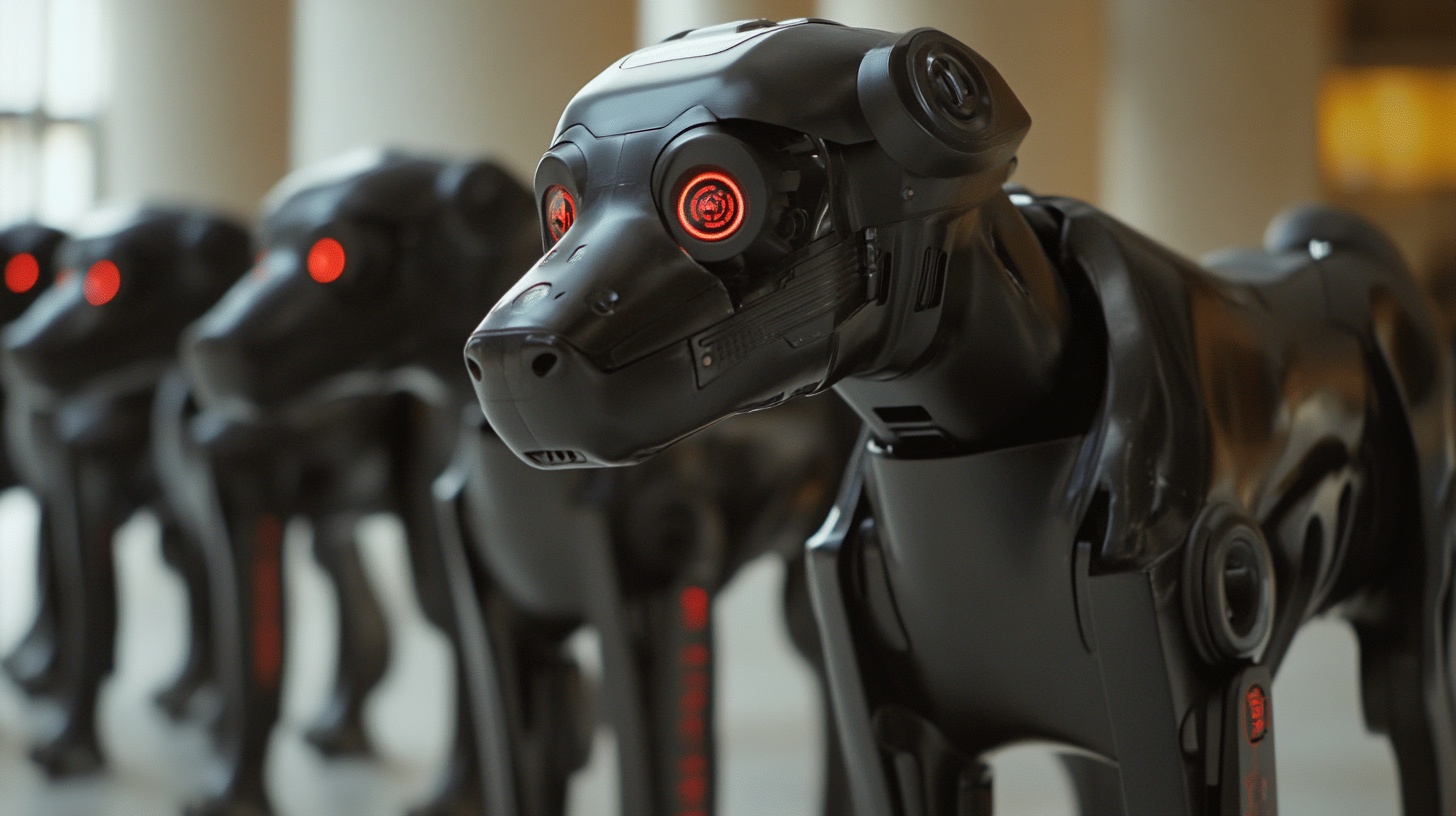Exploring Innovative Options: The Future of Remote Control Robot Dogs in Interactive Entertainment
In recent years, the entertainment industry has witnessed a significant transformation driven by technological advancements, particularly in the realm of interactive experiences. One of the most fascinating developments is the emergence of the Remote Control Robot Dog, which not only serves as a captivating toy for children but also represents a new frontier in interactive entertainment. According to a report by the International Federation of Robotics (IFR), the global toy robot market is projected to grow at a compound annual growth rate (CAGR) of 22% over the next five years, with robotic pets being a major contributor to this surge. This remarkable growth highlights a growing consumer appetite for innovative and engaging entertainment options.
As the capabilities of these Remote Control Robot Dogs evolve, so too do their applications in various settings, including theme parks, educational institutions, and at-home entertainment. A survey conducted by the Entertainment Software Association (ESA) revealed that over 80% of families are looking for technology-driven experiences that foster interactivity and learning. This trend indicates a promising future for Remote Control Robot Dogs within the interactive entertainment landscape, as they not only entertain but also educate and engage users in multidimensional ways. This blog will explore the innovative options that lie ahead for these robotic companions and their potential to revolutionize the entertainment industry.

The Evolution of Robot Dogs: From Concept to Reality in Entertainment
The evolution of robot dogs has been a fascinating journey, transforming from mere concepts in science fiction to tangible, interactive companions in the entertainment industry. Initially imagined as futuristic gadgets, early prototypes of robot dogs were primitive in design and functionality. They served primarily as novelties, capable of basic movements and sound responses. However, as technology advanced, engineers began to integrate more sophisticated sensors, AI, and machine learning algorithms into these robotic canines, enhancing their capabilities and interactivity.
Today, robot dogs are not just playful toys; they have become versatile tools for interactive entertainment. These advanced machines can navigate environments, respond to commands, and even exhibit emotional behaviors, allowing them to engage more profoundly with users. For instance, some of the latest models can participate in games, provide companionship, or even assist in educational settings, fostering a deeper connection between human and machine. The incorporation of augmented reality further elevates the experience, merging physical and digital realms to create an engaging playground for users of all ages.
As the future unfolds, the potential for robot dogs in entertainment appears limitless. With continuous advancements in robotics, we can expect even more lifelike and responsive designs, focusing on enhancing user engagement and interaction. These innovations could lead to robot dogs that not only entertain but also educate and provide emotional support, making them invaluable assets in various interactive experiences. The transformative journey of robot dogs from simple concepts to multifaceted companions represents a significant leap in how we imagine play and entertainment in an increasingly digital world.

Key Features of Remote Control Robot Dogs Enhancing User Interactivity
The evolution of remote control robot dogs has significantly transformed the landscape of interactive entertainment, introducing a plethora of key features that enhance user interactivity. These advanced robotic companions are not just lifeless machines; they are designed to engage users through realistic movements, responsive behaviors, and customizable settings. The incorporation of artificial intelligence enables these robotic pets to learn from their environments, respond to voice commands, and even perform tricks, making them feel more like living creatures than mere toys.
One of the most exciting aspects of modern remote control robot dogs is their ability to integrate with mobile applications. Users can control their robot dogs through smartphones, offering an intuitive interface that enhances the overall user experience. These applications often feature game modes, challenges, and social connectivity options, allowing users to compete with friends or collaborate on missions. Additionally, the inclusion of augmented reality (AR) elements creates immersive experiences, enabling users to interact with their robotic dogs in virtual environments, further blurring the lines between reality and entertainment.
Moreover, many remote control robot dogs come equipped with sensors that facilitate advanced interactivity. For instance, they can detect obstacles in their path, navigate complex terrains, and even respond to emotional cues from users. This responsiveness fosters a deeper emotional connection between the user and the robot, making playtime more engaging and meaningful. These innovative features not only entertain but also educate users about responsibility and companionship in a fun, interactive manner, paving the way for a future where robotic pets could become a staple in family entertainment.
Exploring Innovative Features of Remote Control Robot Dogs
Exploring Virtual Environments: The Role of Robot Dogs in Gaming
The realm of interactive entertainment is rapidly evolving, and robot dogs are emerging as an intriguing player in this dynamic landscape. Recent industry reports indicate that the global robotics market is expected to reach USD 190 billion by 2025, with entertainment robotics, including robotic pets, taking a significant slice of this pie. As video games become more immersive, integrating lifelike robotic companions could redefine player engagement and emotional connection to digital narratives.
In gaming, the incorporation of robot dogs can enhance the virtual environment by providing companionship and interaction beyond traditional screen interfaces. A study by the Consumer Technology Association revealed that nearly 60% of gamers expressed interest in having physical companions that interact with their virtual gameplay. This aligns with the trend toward greater interactivity and personalization in gaming experiences, where players crave deeper connections with their in-game world.
Furthermore, as augmented reality (AR) and virtual reality (VR) technologies advance, the potential for robot dogs to serve as navigational guides or quest assistants in expansive virtual environments grows. According to a report by Statista, the AR and VR market is projected to exceed USD 300 billion by 2024. This presents a unique opportunity for developers to create experiences where robot dogs not only complement gameplay but also adapt in real-time to players' decisions and environments, further blurring the lines between reality and interactive entertainment.
Exploring Innovative Options: The Future of Remote Control Robot Dogs in Interactive Entertainment
Integrating AI in Robot Dogs for Personalized Interactive Experiences
The integration of artificial intelligence in remote control robot dogs is poised to revolutionize interactive entertainment, offering personalized experiences that adapt to individual users. These advanced robotic companions can learn from their interactions, tailoring their responses and behaviors based on user preferences and emotional cues. For instance, a robot dog equipped with AI could recognize its owner's voice and respond with unique behaviors, creating a more intimate and engaging experience.
Furthermore, the use of AI allows for more dynamic play scenarios and challenges that evolve alongside users. Imagine a child playing with a robot dog that not only fetches a ball but also adapts its gameplay based on the child's skill level, learning how to make the game more stimulating or easier as needed. This ability to personalize interactions opens the door to endless possibilities in storytelling and immersive play, where each encounter feels uniquely crafted for the participant.
Additionally, AI integration can enhance social interactions by enabling robot dogs to engage in meaningful conversations and activities with users. These robotic pets could facilitate social connections among children or even adults, providing a safe and entertaining outlet for communication. As technology advances, the ability to integrate various sensory inputs will allow robot dogs to respond in real-time to their environment, further enriching the interactive experience and making them more than just toys but companions that grow and develop alongside their owners.
Future Trends: What’s Next for Interactive Entertainment with Robot Dogs
The future of interactive entertainment is increasingly intertwined with the development of robotic technologies, particularly robotic dogs. As we look ahead to 2024 and beyond, several trends signal a significant transformation in how these robotic companions will enhance user engagement and experience. Recent industry reports indicate that the integration of artificial intelligence with robotics is set to redefine interactions within entertainment spaces, making experiences more immersive and personalized.
Various forecasts highlight that robots will play a crucial role in attractions, with projections suggesting that the use of social and companion robots could increase by over 30% in visitor attractions by 2025. This upsurge is largely attributed to advancements in AI, enabling these machines to learn and adapt to the preferences of their users, thus creating tailored experiences. For instance, independently-running robotic dogs are not just mere toys but are becoming essential elements in interactive environments, capable of performing tasks, engaging with guests, and even providing educational content.
Moreover, the resurgence of robot pets, designed with practical companionship in mind, signifies a shift in consumer behavior. The modern version of these robotic dogs embodies sophisticated AI, making them capable of simulating emotional responses and social interactions, which could bridge the gap between technology and human emotion. The demand for these advanced robotic pets is growing, with potential applications ranging from personal companionship to educational tools, thereby expanding the boundaries of interactive entertainment. As the technology continues to evolve, we can expect continued exploration of robots in spaces that intertwine play, education, and interaction.












